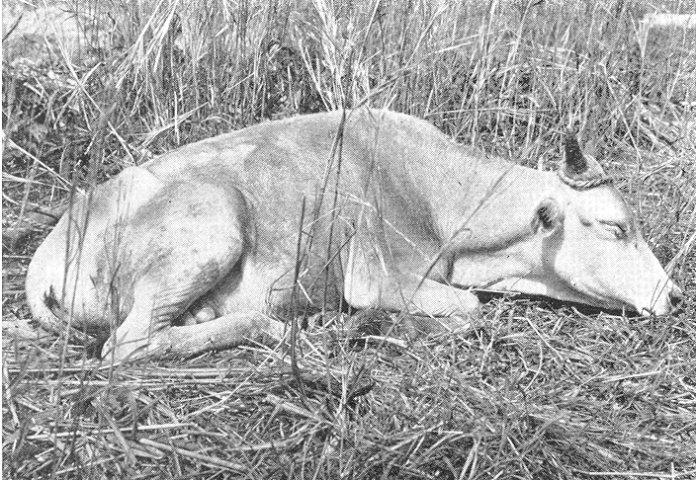Of the many diseases that affect livestock, Nagana (African trypanosomiasis) ranks among the most destructive, causing untold suffering in animals and huge losses to farmers.
Caused by the flagellated protozoan parasite, Trypanosoma lives in the fluids and tissue of its host.
This parasite is chiefly transmitted by the tsetse fly. In humans, the disease is referred to as sleeping sickness.
Nagana affects goats, camels, pigs and sheep but it is in cattle that its devastating effects are most felt.
It is a big problem in Africa mainly because of the conducive environment for the development and survival of the vector, the tsetse fly.
THE VECTOR
The tsetse fly pupa thrives in temperatures of between 17°C and 32°C, making arid and semi-arid areas the best breeding grounds for this harmful vector.
These are the areas where most pastoralist communities inhabit. Of concern is that these communities are the primary suppliers of most of our beef products.
The tsetse transmits the parasite when they feed on blood and other fluids of infected animals. The parasite enters its new host and multiplies in the bloodstream. It then finds its way to several vital organs such as the heart, liver, and spleen, where it causes extensive damage.
SYMPTOMS
After an animal has been bitten by an infective tsetsefly, it may take four to 24 days for the symptoms to show. However, the infection can easily be missed, as most of the symptoms displayed are similar to those observed in other diseases.
A farmer should look out for unusual discharge from eyes, photophobia (tendency to avoid bright light), the coat of the animal becomes rough, loss of appetite, listless (inactive), lags behind the herd and loses interest in its surroundings, the ears and tail of the animal hang limply and the animal no longer reacts to biting insects.
In the latter stages of the disease symptoms include: occasional diarrhoea, enlarged lymph nodes, oedema (swelling of tissues and fluid retention in the body), anaemia, loss of body condition and productivity, muscular wasting, which might result in progressive paralysis in the animal, abortion, the skin may be tight over the ribs and pelvis basically lacks the looseness observed in healthy animals and in younger animals, the hair on the tail switch may fall off.
However, a farmer needs to ascertain what afflicts his/her animals, by calling a qualified veterinary practitioner. The vet can then collect blood samples for examination in a laboratory.
Additionally, once a post-mortem is done, it will be observed that the spleen, lymph nodes, and the liver will be enlarged. There will be a high likelihood of high mortality in the herd if there is poor nutrition and other stress factors.
TREATMENT, PREVENTION AND CONTROL
If detected early, African trypanosomiasis is treatable by trypanocidal drugs which are varied and are available in the market. Always consult a qualified veterinary practitioner to prescribe the appropriate drugs.
Control and eradication of the tsetse remains key in the prevention and control of this trypanosome related disease. The use of spraying methods and use of the black and blue tsetse fly traps has also been effective.
Another method is the development of a tsetse repellant collar by the International Centre of Insect Physiology and Ecology (ICIPE). The collar is impregnated with animal odours that repel the notorious vector.
The waterbuck is the source of these chemicals that are currently in use, though also some repellants such as cow urine have also been used to develop these synthetic repellants.
From the trial reports carried out in the pastoralist areas, this collar has been deemed a success with improved productivity reported in the herders. It being mobile is also an added advantage.
It is also reported that the collar has the ability to protect at least five to six additional cows within its perimeter area. Presently, the collar is selling for Sh400.
The presence of trypanotolerant breeds such as the N’dama cattle of West Africa and the Sheko of Ethiopia, is another scientific breakthrough in the pipeline.








